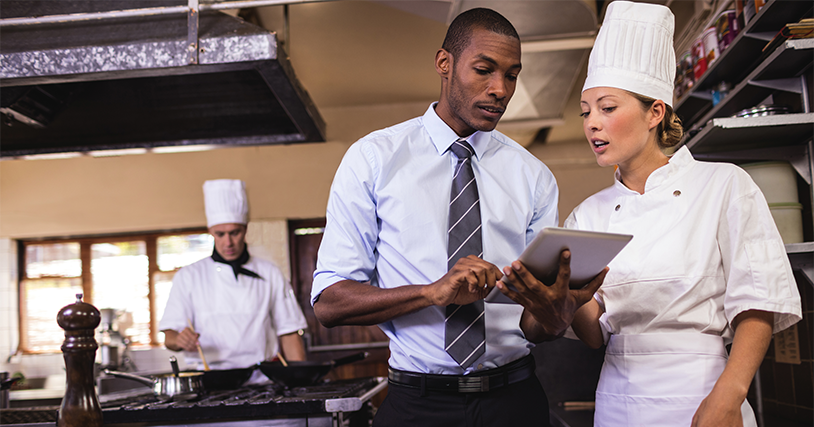Six Ways Restaurants can use Computer Vision to Address Business Problems

Recently, I had a great conversation with Sridhar Sudarsan, chief technology officer (CTO), and Anne Nelson, managing director of SparkCognition, which delivers enterprise scale Artificial Intelligence (AI) solutions that enable organizations to optimize processes, predict future outcomes, and prevent cyberattacks. We discussed practical (and in many cases already available) AI and Machine Learning (ML) use cases, specifically computer vision, for the restaurant industry. Computer vision analyzes real-time and recorded video to provide business and operational insights.
Here are six restaurant-focused use cases where computer vision can be applied to address business problems and benefit operations.
- Identifying consumer traffic patterns. Understanding how your operations affect consumer behavior is essential to maximizing sales and delivering a positive experience. In contrast to the Point of Sale (POS) system, which only sees transactions that were completed, computer vision can track which transactions were not completed. It can help to determine when and how often the drive-thru queue grows to five cars or more; and how many people walk out of the restaurant when they learn of wait-times or see a long line. With this insight, a manager may deploy solutions to prevent these occurrences and mitigate lost sales.
- Quantifying food waste. Computer vision can help curb food waste that eats into a restaurant’s profits, by providing insights related to which items ordered (an indicator of consumer interest) are not wholly consumed (an indicator of consumer dissatisfaction); which items are only partially finished/eaten (an opportunity to re-size portions); which sides are most often thrown away; and how consumer food waste patterns for the same dish may change in relation to individual chefs.
- Incorporating real-time inventory management. One challenge with online ordering is that the online menu is not informed by the restaurant’s actual inventory. When ingredients run out, for online orders, there is no server to inform the customer that a menu item is no longer available, and they should choose something else. Instead, online customers may end up ordering and paying for food the restaurant cannot fulfill. Computer vision in the freezer can be used to monitor and anticipate when ingredients will run out so they can be automatically removed from the online menu, prior to a customer completing payment and having an unsatisfying experience.
- Supporting job aids. With the current labor shortage, many restaurants are hiring based on availability rather than proven experience. They hire whatever talent is willing to work and must teach them the skills they need to perform. Computer vision on a grill and fryer may proactively prompt an inexperienced chef as to when to flip a steak or pull the chicken out of the fryer. The same video analysis may also be used to gauge the quality of food prep and accelerate—even gamify—chef training.
- Validating delivery orders. By far the biggest problem with food delivery is mistakes with the order. And by the time a customer calls to complain, it is expensive to fix the problem and often too late to win their future loyalty. Computer vision in the cook prep areas may be used to not only validate order accuracy but also motivate employees to get it right the first time. Gamify the activity and reward the employees for hitting their key performance indicators (KPIs).
- Acting as a Virtual Assistant Restaurant Manager. With actionable dashboards from the technology solutions and initiatives above, a relatively inexperienced -- yet easier-to-hire -- store manager may quickly gain the equivalent competencies of those who have far more experience but are far more difficult to find and more expensive to hire.
The digitally advanced restaurant is here to stay, as evidenced by these practical applications of computer vision and AI/ML. Watch the full video interview with Sridhar, and discover actionable insights about the restaurant and hospitality industry.